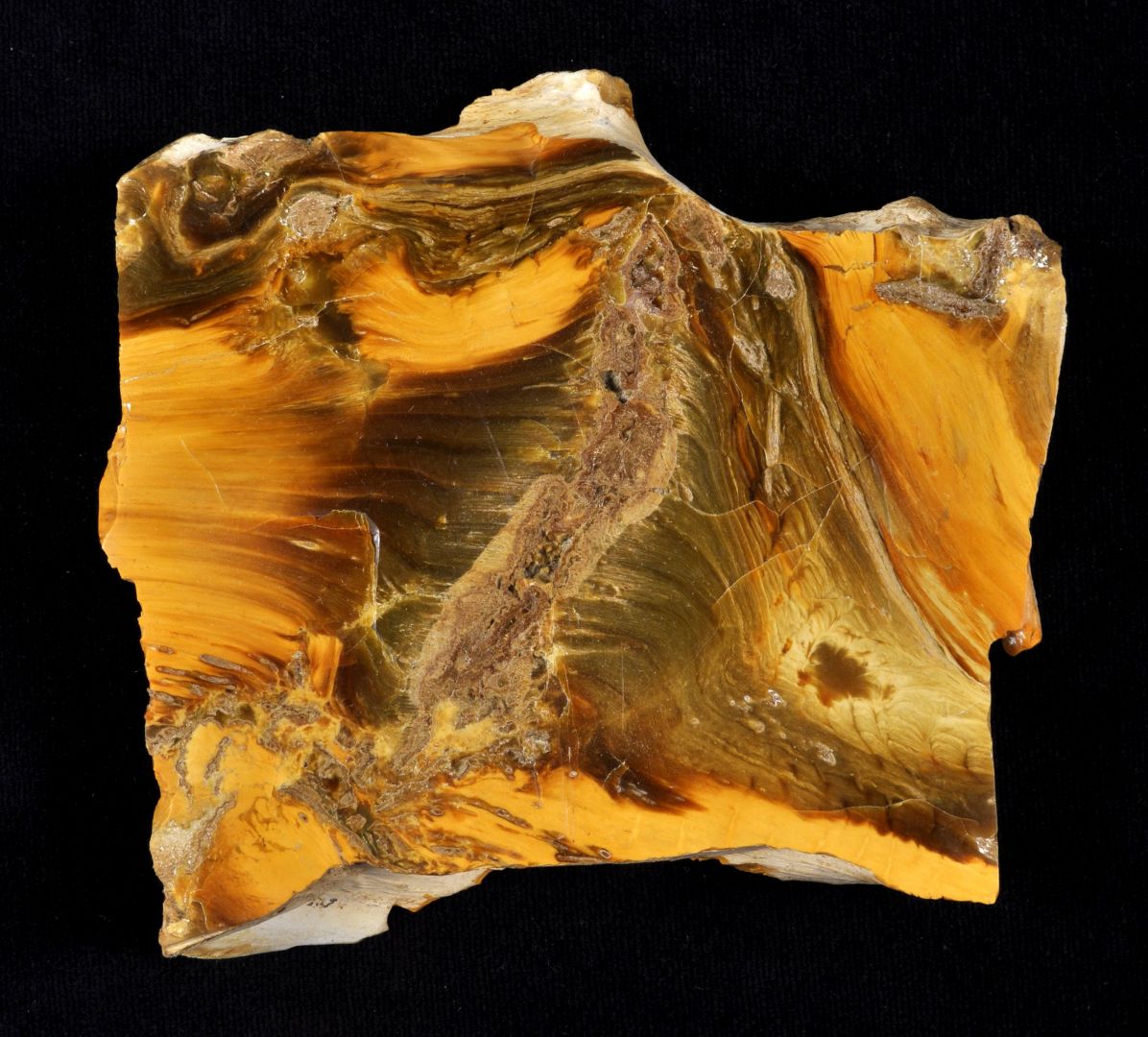MINERALS OF THE CARPATHIANS - 2. view / Pol'ana, Javorie, Karancs-Medves and Cerová Vrchovina Mountains
Messengers of ancient forests, the wood opals
Because trees are made of organic matter, only the process of silicification can preserve them for posterity, tricking the natural decay. The phenomenon can be linked to volcanic activity, which is a drawn-out process on a geological scale. During repetitive volcanic activities, hot silicic acid solution soaked the tissue of the surface vegetation, and the fibres of the trees became silicified, and opalized. There is no organic matter in these trees, or it occurs only subordinately, in the order of a few mm. Silica fills the cells, preserving the structure of the wood. The silicified wood remnants are mainly found in terrestrial, subordinately coastal, shallow-sea rock layers.
In the picture: Polished section of wood opal, Nógrádszakál (Hungary). Size: 11.5 cm. Photo by Géza Kulcsár.
